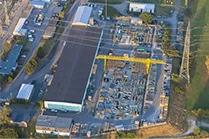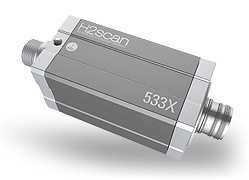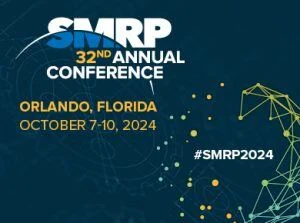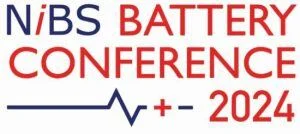One of the key questions we were asked at the Hydrogen Expo was, “What solutions should we use within a Risk Management plan to ensure the reliability and safety of our hydrogen infrastructure?”.
The hydrogen economy is booming, but it is taking time for codes and standards to be developed. So, how do companies that build hydrogen solutions become more informed and mitigate risk?
We normally present companies with two options. The first is to have conversations with H2scan’s experts on how our product portfolio can be designed into their (often) unique application. Knowing how our safety and process sensors fit into their ecosystem helps customers mitigate hydrogen management risks and known areas of weakness. The second is referring customers to our broad network of product and consulting partners that can help them build or enhance their Hydrogen risk management strategy.
We’re pleased to support our customers’ efforts to proactively identify potential risks and implement contingency plans in their hydrogen monitoring design and operating strategies. Investing in supply chain resilience allows us all to maintain the integrity of our products and reinforces our commitment to delivering – without interruption — exceptional value and service to the market.
While at these shows, I saw H2scan at the forefront of helping companies monitor and secure their assets, whether transformer fleet health, battery storage or hydrogen and industrial process application. We continue to educate the market on the value of hydrogen sensing and are getting great responses, as demonstrated by the attendee feedback at the events. They expressed strong interest in safety code compliance, regulations, OPEX savings, and the need to improve safety and reliability – all of these needs are well served by H2scan solutions.
Our Head of Sales recently visited a number of smaller Texan Cooperatives and Municipal utilities and was encouraged by their interest in online Transformer monitoring solutions. Small utilities don’t have spare or lightly loaded Transformers, and an unplanned loss’s cost and customer impact are high. That is exacerbated by the prevailing long lead times. Those utilities are all meticulous in their Transformer maintenance practices, with annual oil sampling and visual inspections being the norm. Some take it even further by manually extracting gas samples from the Nitrogen blanket to measure the Hydrogen content.
All the utilities visited embraced the value of an online monitor that eliminates the blind spots between samplings. Knowing when and why to roll trucks matters to them, and online monitoring provides that information. Being affordable, reliable and easily integrated into existing systems makes H2scan offerings scalable for even the smallest utilities.
 The global utility sector is facing a transformer shortage that continues to persist with no short-term signs of normalizing.
The global utility sector is facing a transformer shortage that continues to persist with no short-term signs of normalizing.
Europe, as an example, is facing an energy grid crisis brought on by a shortage of transformers, as it moves rapidly to build out infrastructure needed to service the growing number of electric vehicles and accommodate new wind turbines and solar panels. With this higher demand, the transformer crisis, not surprisingly, also includes price surges, 18-24 month lead times and a lack of skilled workers.
The global utility sector is facing a transformer shortage that continues to persist with no short-term signs of normalizing. Europe, as an example, is facing an energy grid crisis brought on by a shortage of transformers, as it moves rapidly to build out infrastructure needed to service the growing number of electric vehicles and accommodate new wind turbines and solar panels. With this higher demand, the transformer crisis, not surprisingly, also includes price surges, 18-24 month lead times and a lack of skilled workers.
In the United States, government funding is attempting to step in to accelerate and support infrastructure build-out. California, as one example, is becoming the first to receive federal funds to create regional networks to produce hydrogen for vehicles, manufacturing and energy.
Innovation throughout the renewables/hydrogen economy is both rapid and exciting. For instance, Joby Aviation, Inc. has completed a 523-mile flight with its hydrogen-electric vertical take-off and landing (VTOL) demonstrator aircraft. The flight had no emissions besides water and finished with 10% of the remaining hydrogen fuel.
And, closer to the ground, it appears that hydrogen may soon find a way into boosting antioxidants in agriculture, namely tomatoes. The end result is enhanced crop quality and health benefits, along with crop resilience and productivity.
Data center construction is accelerating in lockstep with renewable expansion, as well as projected processing requirements to support emerging AI applications. A 200MW data center is planned for 2025 construction outside Abilene, TX. Another example of the growing construction of data centers to handle the growing needs of AI workloads, the center was designed to enable the largest cluster of GPUs in the world.
 H2scan announced the intrinsically safe (IS) Gen 5 Hydrogen Analyzer Series at the Hydrogen Technology Expo. The IS Gen 5 is a family of self-calibrating, solid-state sensors designed for hazardous location applications and offers:
H2scan announced the intrinsically safe (IS) Gen 5 Hydrogen Analyzer Series at the Hydrogen Technology Expo. The IS Gen 5 is a family of self-calibrating, solid-state sensors designed for hazardous location applications and offers:
Read the press release here and check out the HY-OPTIMA 5330 Analyzer family and the HY-ALERTA 5320 Area Monitor.
 As noted in our first story above in Hydrogen Economy on The Move, there’s a looming energy grid crisis created by a shortage of transformers. Now is the time to take action to extend the life of your transformer fleet with improvements in your hydrogen monitoring strategy. Read how in our white paper, Early Detection Solutions Are Now a Must with Today’s Aging and Compromised Energy Grid.
As noted in our first story above in Hydrogen Economy on The Move, there’s a looming energy grid crisis created by a shortage of transformers. Now is the time to take action to extend the life of your transformer fleet with improvements in your hydrogen monitoring strategy. Read how in our white paper, Early Detection Solutions Are Now a Must with Today’s Aging and Compromised Energy Grid.

Join us at the 32nd Annual SMRP Conference in Orlando, Florida, October 7-10, 2024, to explore advanced hydrogen sensing solutions. Learn more here.

Join us at China’s largest hydrogen energy and fuel cell event, committed to building a broader platform for communication and cooperation. The event takes place in Foshan, China, October 18-20, 2024.

The exhibition and conference will be hosted in one large open room, providing plenty of space for discussion, debate, and catch-up. We look forward to catching up with you to introduce you to our latest solutions for battery storage solutions. The conference takes place in Shropshire, England, November 6-7, 2024. Learn morehere.
Email us for a meeting: [email protected]!